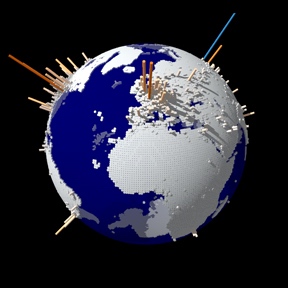About Macroeconomics: Aggregate Demand and Supply
- Course name: Macroeconomics: Aggregate Demand and Supply
Macroeconomics: Aggregate Activity and Demand will examine shifts in aggregate supply and aggregate demand and their short-term and long-term effects for the whole economy.
In studying macroeconomics, the focal point is the whole economy versus markets for goods and services. This approach entails looking at the forces affecting growth, inflation, and unemployment at the aggregate level whether it is output, income, or the set of components within GDP. In essence, macroeconomics involves studying demand and supply for all goods and services in a nation's economy. Aggregate demand is the total amount of goods and services people want to buy; in other words, it measures what people wish to purchase rather than what is actually produced. The aggregate demand is the sum of consumption, investment, government expenses, and net exports. Aggregate supply is the total output an economy produces at a given price level. Firms achieve equilibrium when they produce the quantity of goods and services consumers want to buy - that is, when aggregate supply equals aggregate demand.
Using various policies and tools, a government attempts to steer the macroeconomy toward three main goals: full employment, price stability, and economic growth. You will begin to explore conflicts and complexities in relation to those policies and tools, focusing here on fiscal policy, which consists of taxing and spending, usually done through acts involving Congress (in the U.S.) or comparable legislative bodies.
Course metrics
- Approximate learning hours: 39 hours
- Course: One of three micro courses for Principles of Macroeconomics
- Level: 1st year Bachelor Degree
About Principles of Macroeconomics
Economics is traditionally divided into two parts: microeconomics and macroeconomics. The main purpose of these three micro courses is to introduce you to the principles of macroeconomics.
Macroeconomics is the study of how a country's economy works while trying to discern among good, better, and best choices for improving and/or maintaining a nation's standard of living and level of economic and societal well-being. Historical and contemporary perspectives on the roles and policies of government are part of the mix of interpretations and alternatives that surround questions of who or what gains and loses the most or least within a relatively small set of key interdependent players. In the broadest view, that set consists of households, consumers, savers, firm owners, investors, agency and elected officials, and global trading partners in which some wear many hats and face price considerations at two levels.
Consider one distinction between macroeconomics and microeconomics through the way prices are taken into account in both divisions. On one hand, microeconomics focuses on how supply and demand within a given market determine prices. On the other hand, macroeconomics focuses on changes in the price level across all markets. Another distinction resides within goals. A study of microeconomics orients itself toward firm profit maximization and output optimization as well as consumer utility maximization and consumption optimization. In contrast, a study of macroeconomics situates itself around a number of goals including economic growth, price stability, and full employment.
Macroeconomic performance relies on measures of economic activity, focusing on variables and data at the national level within a specific period of time. Macroeconomics entails analyses of aggregate measures such as national income, national output, unemployment and inflation rates, and business cycle fluctuations. These courses will prompt you to think critically about the national and global issues we currently face, to consider competing views that may agree or disagree with your own, and to draw challenging conclusions from a vast array of perspectives, tools, and alternatives.

